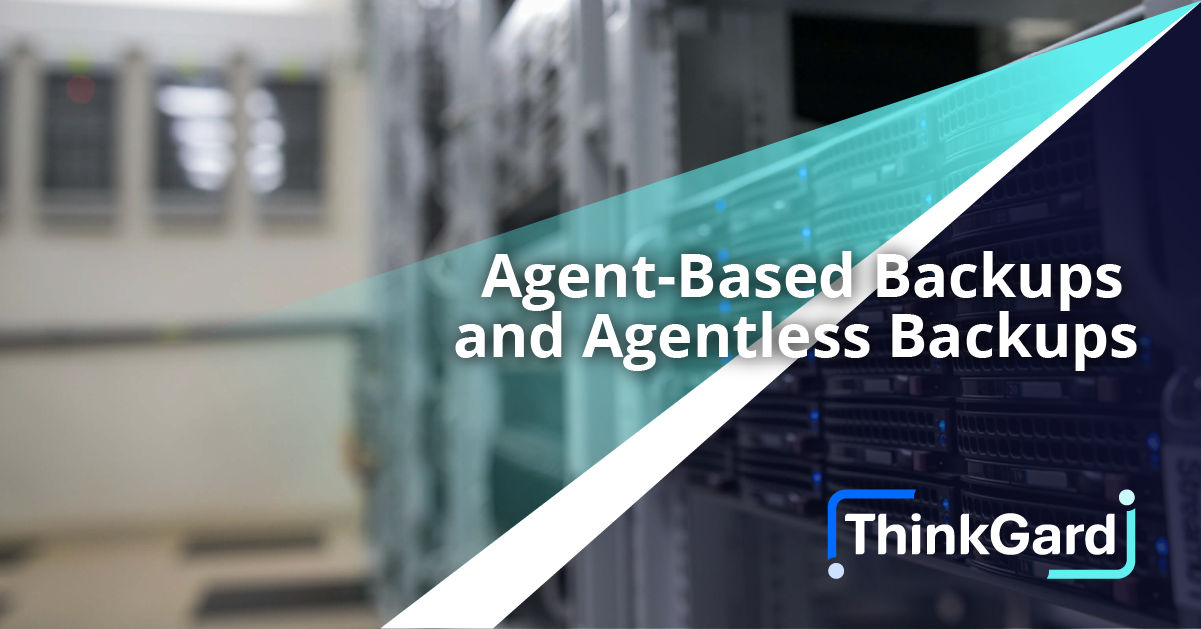What’s Right for You?
While it’s not the same as selecting the green wire or the red wire, knowing how agent-based backups and agentless backups stack up can help you make the right decision for your needs. There are certain circumstances that call for agent-based backups versus agentless and vice versa. Here’s the rundown.
Agent-based backups
Agent-based backup is the traditional backup approach, well understood by IT. Agent-based backup products require the user to install a lightweight piece of software on each machine they want to protect.
Agents live at the kernel level in a protected system so they can easily detect block level changes on the machine. They do not need to scan the file system to determine changes for incremental backups. As a result, agent-based can be more efficient than agentless.
On the other hand, agent-based backups rely on local compute resources to perform the backup and send it to the backup target. Because of this, the backup process can impact application performance if the protected server does not have the compute power necessary to perform backups alongside production workloads. Generally speaking, this isn’t a big issue as long as the server is right-sized to handle necessary tasks.
Agentless backups
Agentless backup, as the name implies, does not require users to install agents on protected servers. While agentless is a newer technology than agent-based backup, it has been around for at least a decade.
Agentless backup is easy to deploy and monitor when compared with agent- based backup, because there is no need to install agents on protected systems This is particularly important in virtual environments with lots of changes. VMs can be spun up so easily it is common for them to go unprotected when using agent-based backup—because a backup agent is never installed. With agentless, this isn’t an issue. Also, agentless backups can be less expensive than agent-based backups, because users do not need to pay licensing fees on a per-agent basis. Pricing models, of course, vary from vendor to vendor.
Many agentless backup products must inject temporary executable modules into systems before the backup can occur. For the most part, this isn’t an issue, especially if the application being backed up offers an API for the backup software to interface with. However, there is a chance that temporarily injected modules can create data integrity issues on protected machines.
Use cases for each
So, when do you use agent-based backups vs. agentless? When choosing between the two, there are a number of considerations.
Physical servers: In physical server environments, agent-based backups are pretty much the standard. Because the environment doesn’t change frequently, installing agents on new servers isn’t really an issue. However, if you have a large number of physical servers, agentless might be a more affordable option, if the backup software vendor you choose requires separate licenses for each protected server (most do).
Virtual servers: In virtualized environments, agentless backup operates at the hypervisor level and doesn’t require an agent to be installed on every virtual machine. As noted above, this ensures that newly created virtual machines will not go unprotected. Also, agentless backup software offers better CPU resource utilization. Resource contention is common when using agent-based backup to protect many virtual machines on a single physical server.
Both: Look for products that allow you to choose between agent-based or agentless backups. Not all backup vendors have the ability to protect physical and virtual environments using agent-based or agentless backups. Choosing a vendor that offers that kind of flexibility gives you all the tools you need to protect a variety of IT environments. This is particularly important for Managed Service Providers.
Why ThinkGard
ThinkGard may be the partner you’re looking for as we offer the flexibility of agent-based backup or agentless backup with our business continuity solution. We believe the choice should be yours!




